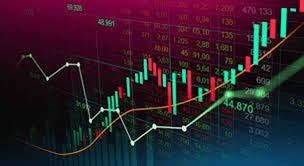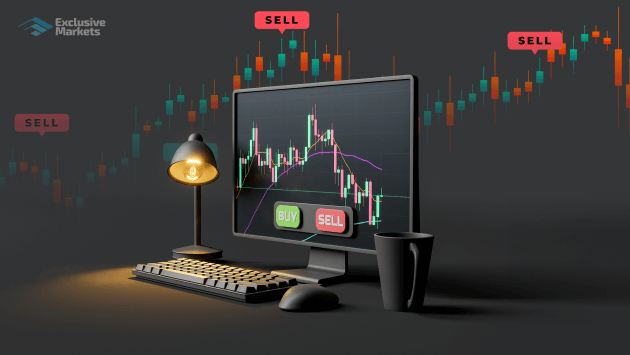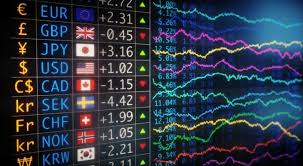Mastering Forex Trading A Comprehensive Guide 1821627329

How to Do Forex: A Comprehensive Guide
Forex trading, also known as foreign exchange trading, involves buying and selling currencies with the aim of making a profit. Many traders are attracted to the Forex market due to its liquidity, potential for profit, and the ability to trade 24 hours a day. If you are looking to venture into this dynamic market, you need to understand some fundamental concepts and strategies. This guide will help you navigate the world of Forex trading and improve your chances of success. For more resources on Forex trading, visit how do you do forex trading webglobaltrading.com.
Understanding Forex Basics
The Forex market is the largest financial market in the world, with a daily trading volume exceeding $6 trillion. Unlike stock markets, Forex operates on a decentralized platform. It consists of various currency pairs, and each pair consists of a base currency and a quote currency. For example, in the currency pair EUR/USD, EUR is the base currency, and USD is the quote currency. The exchange rate indicates how much of the quote currency you need to purchase one unit of the base currency.
Currency Pairs
Forex trading involves trading currency pairs, and they are categorized into three types:
- Major Currency Pairs: These are the most traded pairs and include the USD, for example, EUR/USD, GBP/USD, and USD/JPY.
- Minor Currency Pairs: These pairs do not include the USD, such as EUR/GBP, AUD/NZD, and GBP/CHF.
- Exotic Currency Pairs: These pairs involve one major currency and another from a developing economy, like USD/THB or EUR/ZAR.
How to Get Started in Forex Trading
Getting started in Forex trading requires careful planning and preparation. Here are some steps to guide you:
- Educate Yourself: Understand the basics of Forex trading, learn about technical and fundamental analysis, and familiarize yourself with trading terminology. Numerous online resources, courses, and books can help you gain knowledge.
- Select a Reliable Broker: Choose a reputable Forex broker who offers a user-friendly trading platform, a range of trading tools, and excellent customer service. Make sure they are regulated by a financial authority.
- Open a Trading Account: Once you’ve chosen a broker, you need to open a trading account. Many brokers offer demo accounts that allow you to practice trading without risking real money.
- Develop a Trading Strategy: A trading strategy is essential for success in Forex. It helps guide your trading decisions based on market analysis. Decide whether you prefer to trade short-term or long-term, and develop a plan that suits your goals.
- Start Trading: After completing the above steps, you can start trading. Begin with small trades to minimize your risk, especially as you are learning the ropes.
Understanding Analysis Techniques
Successful Forex trading relies on effective analysis techniques that help you make informed trading decisions. There are two main types of analysis:

Technical Analysis
Technical analysis involves analyzing historical price movements and trading volumes to predict future price movements. Traders use various tools, including:
- Charts: Line charts, bar charts, and candlestick charts help visualize price movements over time.
- Indicators: Tools like moving averages, MACD, and RSI (Relative Strength Index) assist in analyzing trends and potential price reversals.
Fundamental Analysis
Fundamental analysis focuses on economic indicators, news, and events that can influence currency values. Key factors to consider include:
- Interest rates set by central banks
- Economic growth indicators (GDP, employment data)
- Political stability and economic policies
Risk Management in Forex Trading
One of the most critical aspects of Forex trading is effective risk management. Due to the volatile nature of the market, it’s easy to incur significant losses if you do not manage your risks properly. Here are some strategies for risk management:
- Set Stop-Loss Orders: This tool automatically closes your trade once it reaches a predetermined loss level, helping to limit potential losses.
- Use Proper Position Sizing: Determine the size of your trade based on your account balance and risk tolerance. Avoid risking more than 1-2% of your trading capital on a single trade.
- Diversify Your Trades: Diversification can help reduce risk. Avoid putting all your capital into a single trade or currency pair.
Common Forex Trading Strategies
There are several trading strategies used by Forex traders, and your choice will depend on your trading style and risk tolerance. Some popular strategies include:

Scalping
Scalping is a short-term trading strategy that involves taking advantage of small price movements over short periods. Traders typically make numerous trades throughout the day, aiming to accumulate small profits that add up over time.
Day Trading
Day traders open and close positions within the same trading day. They rely on daily price movements and often do not hold positions overnight to minimize exposure to overnight market shifts.
Swing Trading
This strategy involves holding positions for several days or weeks. Swing traders aim to profit from price swings within a trend, using both technical and fundamental analysis to identify entry and exit points.
Position Trading
Position trading is a long-term strategy where traders hold positions for weeks, months, or even years. This strategy relies heavily on fundamental analysis, as position traders look to capitalize on major economic trends.
Conclusion
Forex trading can be a rewarding endeavor, but it requires a solid understanding of the market, effective strategies, and robust risk management. By educating yourself, developing a trading plan, and practicing patience and discipline, you can enhance your chances of becoming a successful Forex trader. Remember that while the potential for profit is significant, losses are also a part of trading. Stay informed, keep learning, and trade wisely!
